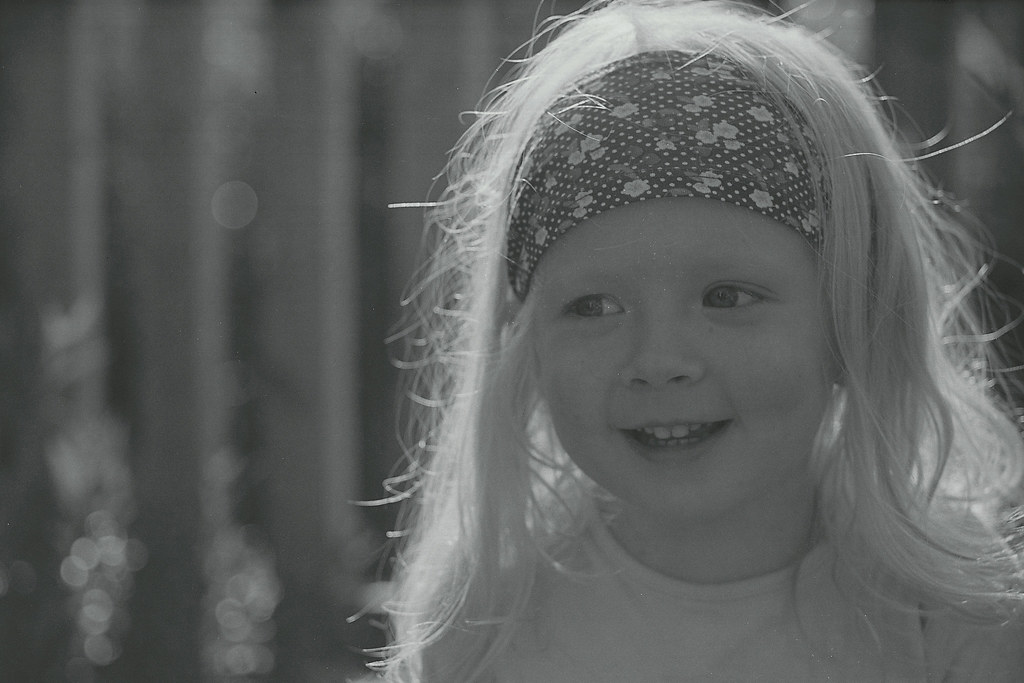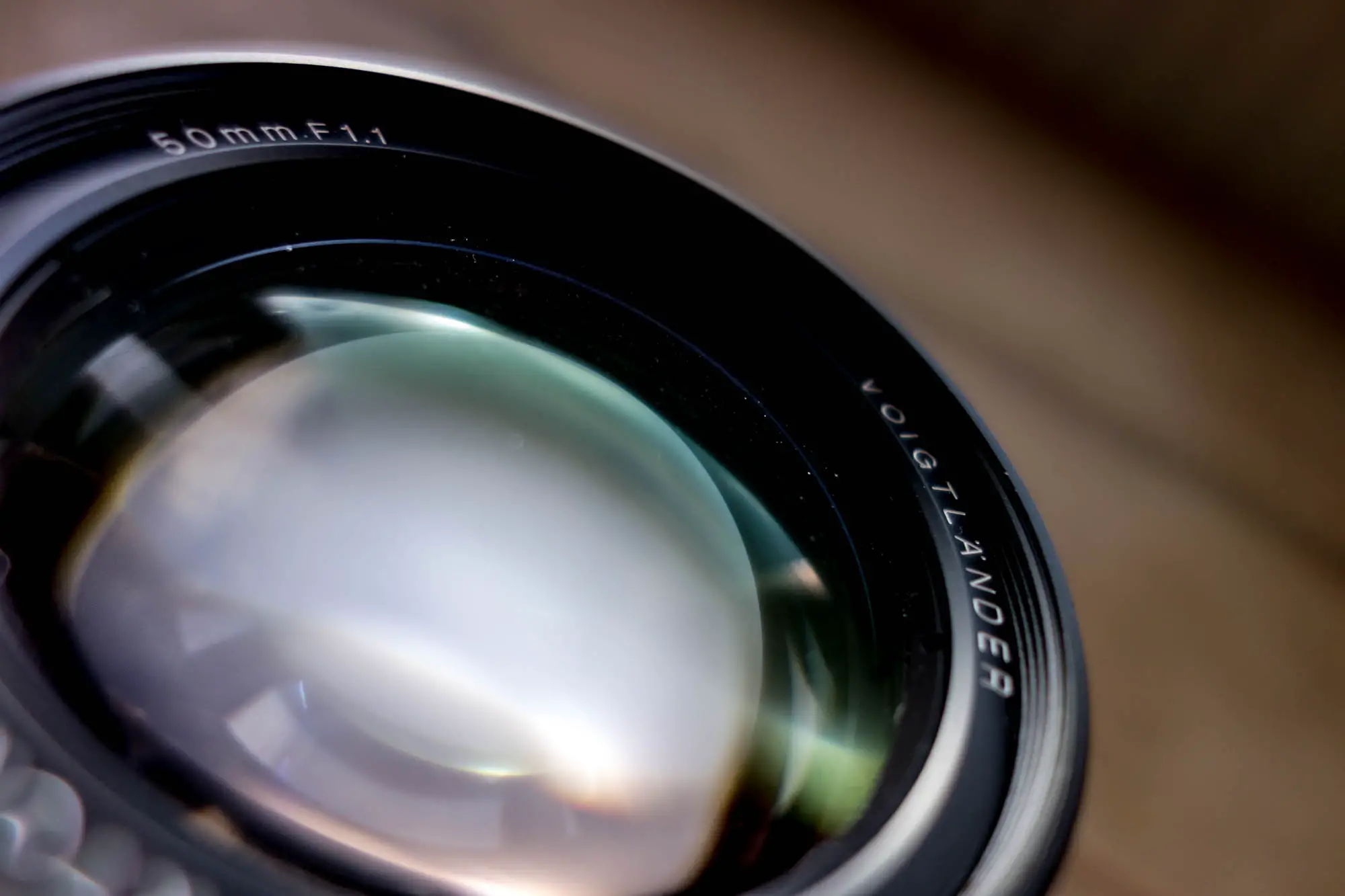I’ve spent a lot of time over the years reading online about lenses. I’ve had an interest in lenses with a discernible character for a good while before I started this blog, and it is an interest I’ve kept since. What this has meant is that to a lesser or greater extent I have fairly consistently read about them online. And in doing this, I’ve found myself increasingly baffled over the years by what I consider as a misconception about what makes a good or bad lens. It was in fact my being baffled that spawned the recent post on the definition of a perfect lens.
That post – all be it a good summary of my feelings toward lenses as a subject – doesn’t really answer any questions, in fact really it just makes the idea of finding a perfect lens a harder concept to swallow. So to follow up from that, I thought I’d put together some info on how to actually find the perfect lens…
The reality is, at least outside of my slightly whimsical comments about any lens potentially being perfect, it is quite likely that there’s a lens, or indeed a series of lenses that whilst aren’t perfect, are perhaps optimal (to use a word commented on the perfect lens post) for most of an individual’s style or chosen subject matter.
Of course, this does does assume that style is a constant, and/or goals predefined, which in tern, if they aren’t makes things complicated again. But whilst I don’t want to get into the subject of personal style, or defining ones style – not least since I’m not sure I have achieved any such thing myself – I do think that the discovery and exploration of lenses can be quite pivotal in the path of discovery and exploration of ones own style.
To that end, I thought I might put together a series of posts on the subject of discovering lenses. Or more precisely, I thought I’d write a little bit about how to interpret what can be read on the Internet about lenses along the path of that discovery.
I’ve broken this down into a few distinct posts, the first series of posts – this post being part 1 – are going to concentrate on the definitions of words people use when describing lenses. The final post is going to be about how I respond and interpret various sources of info about lenses. Moreover, it will be about how I actually think that pretty much everything that is said about lenses online is misleading – or at very least seriously flawed – and therefore how I personally approach the process of looking to find info on a particular lens before I buy one.

Definitions of terms used to describe lenses
Before I get into this, let me just make something abundantly clear. The subjects I am going to talk about are things that someone might write thesis on. People have PHDs in this shit! I do not have a PHD, in fact I only actually have a handful of GCSEs (exams you do at the end of school at 16). I am not a well educated person at all, and I am most certainly not scientifically minded. This is, in my view, a fairly serious problem when trying to understand what people say about lenses since a lot of what is said is spoken in scientifically derived terms. It actually strikes me as fairly ironic that something so wholly creative as photography could be so fundamentally high jacked by science, especially in the arena of the end user/photographer… But it’s happened, and as creative people looking to achieve something creative, we are left to try and understand this mumbo-jumbo.
My get-out clause
These posts are not supposed to be a set of scientifically perfect definitions. This is intended as an interpretation, or moreover simplification of these terms to make them somewhat more easy to grasp. I’ll never forget something my chemistry teacher said at the beginning of my GCSE years, she said “Everything I’m going to teach you for the next two years is basically incorrect, chemistry is an enormously complicated subject, what you are going to learn is what you need to know to pass your GCSE in double science.” I see this as a similar deal, it is what I have concluded I need to understand to get by, it is not the final word or the perfect understanding of the science of optics, it is a foundation, a basis for joining a few dots for people like me who can’t be bothered with or don’t have the intelligence to grasp anything deeper. The difference between me and my chemistry teacher is that she understood what she was dumbing down, this stuff is pretty much the peak of my current understanding, and likely ability to understand.
I also intend this to be a permanent work in progress, I shall add more to it as and when I think to. Feel free to add comments below with regard to expanding on anything I say, suggesting areas I could cover and of course correcting me where I undoubtedly get things wrong… Just remember who you are talking to here, and keep it simple!
Sharpness, Contrast and 3D Pop
Lens Contrast / Microcontrast
I’m starting with this one as I think it’s the subject that causes the most confusion. For a start, as far as I can fathom, the terms lens contrast and micro contrast are interchangeable. Things get confusing because of this word “contrast” and its use. I’m guessing that the term micro contrast was actually coined to help solve this problem. The problem comes about when folks talk about a lens with “high contrast”, as thanks to some level of misunderstanding either in the writer or the reader, this could be taken to mean either high lens contrast or that the photos a lens produces have a high overall contrast.
When people talk about a lens with high lens contrast (or high micro contrast), in simple terms they are talking about high levels of perceptible sharpness, definition, clarity and “pop” of an image. Though with regard to sharpness this shouldn’t get confused as the complete story. High lens contrast results in images that have more “pop” or “bite” to the finer detail; the detail looks more defined, resulting in an image that can appear more sharp, but this element of sharpness isn’t derived from the lenses resolution.
Resolution
A high resolution lens is able to resolve a lot of fine details. Along with lens contrast, high resolution contributes to a photo that appears subjectively sharp. Resolution is a objectively measurable thing, whereas microcontrast is much more of a subjective subject.
Sharpness
Combining resolution and lens contrast into one subject is where the usually fairly ambiguous term “sharpness” comes from. Separating the terms and understanding their overlap can sometimes get confusing, since they are sort of co-dependant.
Lens contrast and resolution.
If you think of a strand of hair in a photo. A high resolution lens will resolve the strand of hair and show it to be there. What high lens contrast brings to the party is more clearly defined subtle and small changes in tone, on, and at the edges of the hair.
If you think of a area of hair in a photo, a high resolution lens will pick out the hairs individually, but as they are all close in tone, they might not appear strongly defined. With a high contrast lens, all the shadows and changes of tone on and between the hairs will be more defined, so the hair looks sharper. Even though it’s not actually being resolved in any more detail, the contrast of tone in the small details is greater therefore giving the detail more clarity.
If I think about this too hard it makes my brain go in circles, as of course if there was no contrast at all, there would just be just one tone, and with one solid tone there would be no detail at all. This is why contrast and resolution get confused, or regarded as the same or nearly the same thing – resolution can’t really exist without contrast to define it.
These two next photos aren’t the best examples since they’re not exactly perfectly focused, but hopefully they give some clues to what I am talking about. The first was taken with a Summar, an elderly low contrast lens, the second with a Contax T3 a modern high contrast lens. The Summar, despite being old, is actually pretty sharp. If you click through to flickr you can see Keira’s strands of hair (left), there is also a good amount of detail in her coat, though that detail has a sort of softness to it through the lower contract of the fine detail. In the second photo, admittedly also a higher resolution lens, Connie’s hair and the details in her jumper are better resolved, but the detail is also higher in contrast. As I say, not the best examples, but hopefully enough to be going on with.


Contrast over resolution
It is also possible to have a lens that relies more heavily on contrast than actual resolving power to give a subjective appearance of sharpness. For example, if two lenses were used to take the same photo, one with higher lens contrast the other greater resolving power, depending on how the image is displayed, what distance it was viewed from, the size it was reproduced, and the media used to reproduce it; the image taken with the lens with higher lens contrast might actually appear sharper.
Overall contrast vs Microcontrast
Contrast as a concept of course does exist outside of this definition, and again, this definition is something that helps me get my head around what micro contrast means. In fact, I guess this is where the phrase micro contrast has come from. An images overall contrast relates to the extent of difference between light and dark tones across the wider photo; it is contrast by definition on a larger scale. Micro contrast is still just contrast, but within the realm of smaller and smaller – or micro – details and tonal transitions within an image.
Lens contrast and 3d Pop
No conversation about lens contrast / microcontrast is ever complete without a mention of 3D pop. In fact some would argue that 3D pop is of far greater interest in the conversation about microcontrast than sharpness is. The problem with 3D pop is that it’s one of those things thats more subjective than it is anything else. As such, there’s no measure for it and sometimes is just as much derived from the light and shade within an image as anything else.
That said, since high microcontrast increases a sense definition, clarity of an image it is hard to argue that high micro contrast lenses don’t also increase the sense of 3D pop in an image.
The above two images were taken with the Zeiss ZM Sonnar – a lens known for is high microcontrast. The macro effect of higher microcontrast is an undeniable clarity within these images that helps the subject “pop” and look 3D – hence “3D pop”.
What’s interesting about the Zeiss ZM Sonnar is that as a lens it is also know for not necessarily being that high resolution. This of course adds to the point that microcontrast is a subject that expands way beyond the concept of “sharpness” alone.
Flare
Flare is the next logical thing to talk about since, largely speaking it is the thing that affects the overall contrast of photos. There are a few things that result from a lens that “suffers” from flare.
Ghost flare
Firstly, the obvious one; blobs of light. If your lens is coated you might see big coloured blobs, sometimes aperture-blade shaped. We’ve all seen it. It is obvious in the next photo…

Veiling flare
Flare isn’t always visible in this respect though, in fact, to a degree flare is apparently always present even when you might not recognise it as being so. The almost-ever present flare is what’s called “veiling” flare.
The extent of the affect of this veiling flare is what gives rise to a higher or lower contrast image. If you have a lens that causes a lot of veiling flare, blacks won’t be as dark, and whites not as white in the outcome, and in extreme cases, like the next photo taken with my 90mm Elmar, images can look completely washed out.

Flare and lens contrast
A lack of lens contrast and large amounts of veiling flare tend to result from uncoated glass. Coating apparently helps prevent internal reflections within a lens as well is unwanted transmission of light. Without coating light can bounce around inside the lens between and off each element of glass, dispersing and loosing its direction. On a micro-level I guess this results in lower lens contrast, and on a macro-level, the scattering of light causes the image to lack contrast overall.
Since old or “vintage” glass tends to be uncoated, or coated less successfully than modern glass, quite often the effects of veiling flare and low lens contrast come hand in hand. This is probably why there is confusion relating to lens contrast with relation to the contrast of the whole image, people talk about lenses with low lens contrast and so when other people read “this is a low contrast lens” and they see a low contrast image, the two concepts get confused.
Controlling flare
The effects of flare can be controlled to some extent. The use of a good hood will improve and increase the consistency of most lenses, but the positive affect of a hood will be more limited in older lenses where you don’t have lens coatings working for you.
Fortunately, if you have a lower contrast, higher resolving lens that suffers from veiling flare it is still possible to get “more” out of the lens by using it in conditions where the light is better controlled, by adding a hood, and then – if you see fit – working on the acutance as part of your post process. This next photo was taken with the same 90mm Elmar as the very veiled photo of Connie above.

Other definitions within the subject of sharpness
Diffraction, Spherical Aberrations and Field curvature
Before I close this post, I just want to touch on a few things that can impact on sharpness. This isn’t necessarily an exhaustive list, but these are subjects that give rise to certain phrases that come up when reading various sources about the sharpness of a lens.
Diffraction
Diffraction causes photos to be less sharp. It is something that happens in all lenses at all apertures, though it only really becomes apparent when a lens is stopped down. The more a lens is stopped down, the more the sharpness will suffer from diffraction and the softer the image will be. Most lenses are at their optimum around f4-f8, at smaller apertures than this diffraction, and therefore softening of the image, will become more and more of a “problem”.
When people talk about diffraction in lenses they often say things like “above f8, diffraction kicks in and photos become softer”. If you want to know what the actual definition of diffraction is, try Wikipedia, as I’m not even going to try to describe it.
Spherical aberrations
Spherical aberrations also cause photos to be less sharp. They are called as such because they are caused by the light traveling through a spherical lens element/s (I think). They are largely prone to causing issues at wider apertures; the wider the aperture the more likely a lens is going to suffer from spherical aberrations. As I’ve previously mentioned, lenses are often at their optimum around f4-f8, at larger apertures than this, if the photos become increasingly softer as the lens is opened up, there is a chance that what you are seeing is the effect of spherical aberrations. Unlike diffraction though, some lenses are so well designed that spherical aberrations are largely overcome even at the largest apertures. Again, this is a subject it would be pointless me trying to describe when so many more intelligent people have put their time to doing so. If you would like to know more, here is a good resource – apparently written by clever person.
“Soft wide open” and “Sharper stopped down”
I mention spherical aberrations as although these words are not particularly frequently used, these aberrations are the cause of a lot of things that are said about lenses. Specifically in reference to the above, when people say “The lens is quite soft wide open”, or “The lens becomes shaper when stopped down to f2.8” I think there’s a good chance this is because of the effects of spherical aberrations.
But that isn’t the only thing these aberrations are responsible for…
Focus shift
Spherical aberrations are also what causes focus shift, which of course can also lend itself to softer photos through effectively miss-focusing. Those of us who shoot rangefinders are probably more familiar with this phenomenon. In simple terms, it is when the distance a lens is focused at changes when the lenses aperture is stopped down or opened up. This is of particular issue with rangefinder cameras since focus is determined through a mechanical coupling and not directly with a through-the-lens viewfinder as it is with an SLR.
With a rangefinder, if for example the mechanical coupling of a lens that suffers with focus shift is set to be accurate at 0.9m at f2, then at f1.5 when the rangefinder coupling shows the lens is in focus at 0.9m, it might actually be focused at 0.885m. Those with a keen knowledge of lenses will likely know exactly the one I am talking about there.
Focus shift like the above can give rise to the misunderstanding of a lenses ability to take a sharp photo, and actually lend itself to people thinking of said lens as being, again, “soft wide open”.
Bokeh
Spherical aberrations also have a profound effect on bokeh as it’s their correction that causes many of the well regarded – and indeed less well regarded – affects on the out of focus areas of a photo. I shan’t go into it now though as I have whole post on the subject of bokeh coming.
Depth of field and field curvature
If “depth of field” describes the depth of the of plane of focus, field curvature is the descriptive term for the shape of the plane of focus. If you are anything like me, you have might at some point thought that what is in focus is parallel to the camera? This is not necessarily the case.
Flat field lenses
Some lenses field of focus is more parallel to the camera than others, these lenses are known as flat field lenses. Macro lenses and indeed some good and longer telephoto lenses are flat field. Some other high quality lenses are considered flat field too, but the reality – at least as far as I can gather – is that no lens has a perfectly flat, perfectly parallel-to-the-camera field of focus; some lenses are just more pronounced in the curvature of their field others. Depending on other specifications of the lens, and its intended usage, this curvature might present itself as more or less obvious.
The affects of field curvature
Field curvature is most obvious when taking photos of a flat subject at a larger aperture. If the depth of field is narrow, and the plane of focus is curved, what is in focus can curve away from the flat surface being photographed. What this results in is the flat surface being photographed can often be less sharp at the points at which the focus curves away from it.
Smearing or softening in the corners
Since the curvature of filed is often more pronounced toward the edges of the frame it is one of the causes of photos being soft in the corners. In my experience some lenses also smear a photo into the corners as well as soften. Being honest, I’m not sure if this is caused by field curvature or something else, perhaps astigmatism, or something else… maybe someone can enlighten me?
So there you have it…
…a bunch of fairly simplistic descriptions of some fancy sounding words. As I said at the beginning of the post, I’m not convinced by how accurate I am in these descriptions, but what I am convinced by is that really, the level of understanding I am perpetuating here is good enough for most people to get a little bit more out of some of the various sources of info of lenses out there. As I mentioned, I’ve a couple more posts planned for definitions, and I final post about better interpreting what people say about lenses as a whole, so keep your eye out for those of you’re interested.
Cheers
Hamish
Ref and more reading
Diffraction – Wikipedia
Acutance – Wikipedia
Understanding Lens Contrast – Luminous Landscapes
Understanding Lens Diffraction – Luminous Landscapes
Spherical Aberrations – Toothwalker
Astigmatism and field curvature – Toothwalker
Share this post:











Comments
Blinx on Understanding Lens Terminology – Part 1 – Sharpness, Contrast, 3d Pop and Flare
Comment posted: 28/05/2015
Most SLRs have a stop down button that can be used to determine the true point of focus at these apertures, though it requires more attention as the viewfinder darkens slightly. Some state of the art lenses like Canon's 1.2 L-series with otherwise peerless reputations can show focus shift, so it doesn't denote a "bad" lens. The phenomenon is also common in darkroom lenses, which can lead to people thinking they haven't focused properly, or they have a poor enlarger optic.
Shift is not something more common 50mm lenses with apertures of f1.8 and less are subject to, nor is it a problem with wide angle lenses.
Comment posted: 28/05/2015
foto2021 on Understanding Lens Terminology – Part 1 – Sharpness, Contrast, 3d Pop and Flare
Comment posted: 28/05/2015
It is the nearest thing I have seen to a definitive article on the subject.
Comment posted: 28/05/2015
jeremy north on Understanding Lens Terminology – Part 1 – Sharpness, Contrast, 3d Pop and Flare
Comment posted: 29/05/2015
A while ago I contacted Zeiss concerning this subject with particular reference to their Sonnar 50mm f1.5 ZM lens. The following is what they replied to my enquiry:
"Just a few facts about focus shift:
-all spherical lens types without special corrections suffer from a certain amount of focus shift caused by spherical aberration.
-lenses with high aperture (high speed, e.g. f/1.5) suffer more from this issue than slower lenses (e.g. f/2).
-lenses without floating elements design (e.g. Sonnar T* 1,5/50 ZM) show more focus shift at closer distances than at infinity compared to lenses with floating design
Rangefinder lenses with rangefinder coupling (e.g. M-mount) can only be adjusted to show correct focus with the rangefinder at a certain distance and a certain f-stop. The rangefinder of the camera cannot compensate the effects of focus shift. So every adjustment of the camera´s rangefinder and the lens is a compromize.
In practical use, this means:
-when using those lenses on cameras in live view mode (e.g. Leica M240, or adapted to a mirrorless camera) with pre-selected aperture value, the focus shift is no problem at all. The effects of the focus shift can directly be seen on the screen and the lens could be re-focussed before taking the picture.
-the out-of-factory adjustment of the C-Sonnar (together with a perfectly adjusted camera rangefinder) will show the following results:
about 1.5 cm front focus at f/1.5 and 1m focusing distance
perfect focus at f/2 and 1m focusing distance
about 2-3 cm back focus at f/2.8 and 1m focusing distance
We found that this out-of-factory adjustment is the best compromize for this lens type for nearly all typical applications.
Any different adjustment of the C-Sonnar is possible. So if the lens is adjusted for zero focus shift at f/1.5 and 1m, the back focus at f/2.8 (and stopped down further) will increase significantly, making it much harder to focus when stopped down.
So before considering an individual adjustment of a C-Sonnar lens, individual tests in typical applications with your individual camera body are essential."
I hope that is of use to this discussion.
Just a note to add to your comments on contrast and sharpness. I was thinking that to add to your illustration, it could be like half tone reproduction (e.g. newsprint ) photographs etc which are high contrast but low definition.
Comment posted: 29/05/2015
Comment posted: 29/05/2015
Comment posted: 29/05/2015
Blinx on Understanding Lens Terminology – Part 1 – Sharpness, Contrast, 3d Pop and Flare
Comment posted: 29/05/2015
Comment posted: 29/05/2015
Comment posted: 29/05/2015
Comment posted: 29/05/2015
Comment posted: 29/05/2015
Blinx on Understanding Lens Terminology – Part 1 – Sharpness, Contrast, 3d Pop and Flare
Comment posted: 29/05/2015
Comment posted: 29/05/2015
Hamish on Understanding Lens Terminology – Part 1 – Sharpness, Contrast, 3d Pop and Flare
Comment posted: 31/05/2015
Review of the Vintage Leica Summilux 50mm (Type 2) | What Aukje Sees on Understanding Lens Terminology – Part 1 – Sharpness, Contrast, 3d Pop and Flare
Comment posted: 13/06/2015
Understanding lens terminology - Part 2 - Bokeh - 35mmc on Understanding Lens Terminology – Part 1 – Sharpness, Contrast, 3d Pop and Flare
Comment posted: 13/06/2015
The Voigtlander f/3.5 50mm VM Heliar - a review of two halves - 35mmc on Understanding Lens Terminology – Part 1 – Sharpness, Contrast, 3d Pop and Flare
Comment posted: 26/09/2017
The Carl Zeiss ZM f/1.5 50mm C Sonnar - 35mmc on Understanding Lens Terminology – Part 1 – Sharpness, Contrast, 3d Pop and Flare
Comment posted: 07/08/2018
Sharpness? Overrated, and very rarely part of the definition of a good photo! - 35mmc on Understanding Lens Terminology – Part 1 – Sharpness, Contrast, 3d Pop and Flare
Comment posted: 09/09/2018